PROBABLY no part of the recording system is so capable of doing harm as a poor motor and turntable, because, if it is inherently unsatisfactory, there is just no way to "make it do." The 2 most important requirements are sufficient power and constant speed.
As the stylus bites into the disc coating, it creates drag on the revolving turntable--a drag many times greater than that of a pickup needle. Most turntables made only for playing records would stop if a recording stylus were lowered to the surface of a disc on them.
TURNTABLE RIM MOTOR
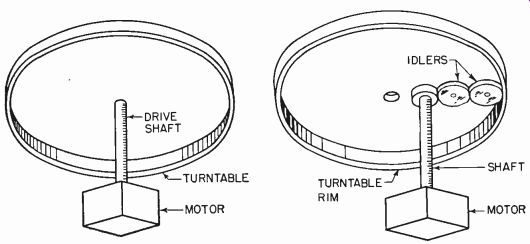
Fig. 301-Simple direct-drive turntable. Fig. 302-Rim-driven turntable.
Never use a turntable not specifically designed for making records.
When a phonograph turntable varies its speed, the musical tones appear to waver or "wow." This is because the tones produced depend on the rate at which the groove variations pass under the pickup needle.
If they do not pass at a steady rate, the tone will be unsteady. Similarly, if the speed of the recording turntable is not constant, the tones will waver when played back on a good phonograph.
Speed of a typical good recording (or playback) table is constant to within 1/2 of 1%, and, within any single revolution, within 1/4 of 1% when under load (cutting a record). Since the human ear can detect with great discomfort variations of even 1% in musical pitch, it is clear that there is not much room in a recording system for inferior turntables!
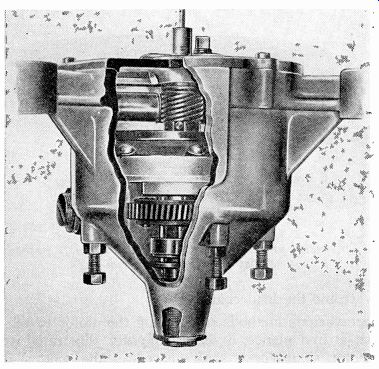
Fig.
303-Precision built direct-drive assembly.
Recording Speeds
The speed of the turntable must be not only constant, but also standard. The 2 standard speeds are 78.26 r.p.m. (the speed of standard phonograph records) and 33 1/3 r.p.m. (used in most broadcast transcriptions). If the recording turntable revolves faster than the playback table, the groove variations will not be passing under the pickup needle as fast as they passed under the recording stylus. The music will then be lower in pitch when it is played back than it was in the original. Conversely, if the recording table is too slow, the pitch will be raised in playback.
If a.c. lines are available, the recording motor should always be of the synchronous type. Speed of these motors depends only on the line frequency (usually 60 cycles) and not on the line voltage.
Another source of wow is the signal peak. When a high-level passage is recorded, the stylus swings laterally a greater distance. It bites into a larger amount of the disc coating in a given time than when low-level passages are in progress. The amount of drag caused by the stylus depends, not only on the weight of the cutter and the hardness of the disc coating, but also on signal level, which changes momentarily. It is very important that the motor have sufficient reserve power to overcome the load changes.
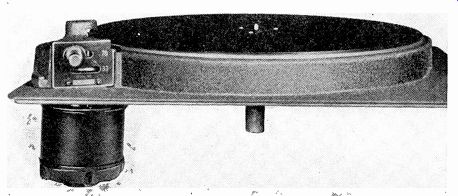
Fig. 304--An outside rim-driven turntable. Lever at left pushes idler
against the rubber-tired rim.
There are various methods of coupling the motor to the turntable.
The simplest, at first glance, is direct coupling, illustrated in Fig. 301.
Here, the motor shaft-or a shaft geared to the motor-is fastened directly to the center of the turntable.
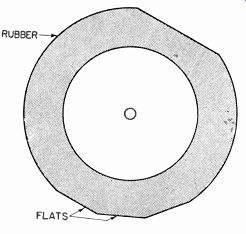
Fig. 305-Idler wheel may develop flat spots.
Direct drives are reliable only in the most expensive and precisely built units of the type shown in Fig. 303.
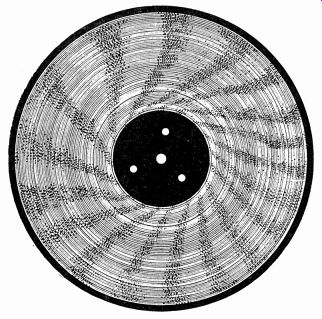
Fig. 306--Spoke pattern, result of idler "flats".
The method most commonly in use today for all grades of units is rim drive, shown in Fig. 302. Here the motor shaft friction-drives a rubber-edged wheel. The rubber wheel contacts the inside edge of the turntable, either directly, or through one or more idler wheels of similar construction. Rim driving requires less torque from the motor, although motor speed must be higher for a given turntable r.p.m. than for direct drive. Since speed is cheaper to incorporate into a motor than torque, a good rim-drive table can be purchased for much less than a direct-drive arrangement giving comparable results.
There are variations in rim-drive arrangements. Frequently several idler wheels are provided to reduce turntable rumble (vibration transmitted from the motor) and to allow for 2-speed operation by selecting the proper idler combination. Often the idlers and the motor shaft are placed outside the perimeter of the turntable, as in the unit shown in Fig. 304. In this unit, the lever at the left is placed in either of 2 slots to select the proper idler for the desired turntable speed. A significant advantage is a third position of the lever, which removes all idlers from contact with the turntable when the unit is not in use.

Fig. 307-Simplified belt-driven turntable.
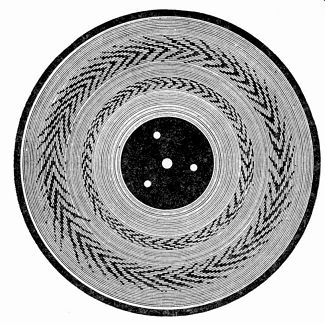
Fig. 308-Moire pattern, resulting from motor vibration or worn idlers.
In tables which do not include such an arrangement, it is good practice to perform the same operation by hand. A piece of rubber pressed against a metal object will tend to assume the shape of the metal object after a time. When the turntable is revolving, the pressure is evenly distributed around the idler wheel, but if it is allowed to stand for long periods, the idler will develop a "flat," as shown in Fig. 305. Thereafter, turntable revolution will be uneven and poor recordings will result. Records cut on a motor with a flatted idler will frequently have a visible spoke pattern similar to that in Fig. 306.
Belt drive is used in a few high-quality systems (see Fig. 307).
The chief value of belt drive is the mechanical insulation of the motor from the turntable.
The 3 types of units, then, are direct drive, rim drive, and belt drive. Of these, rim drive is the least expensive. When well built, it is satisfactory in every way. Rim-drive recording assemblies are sold in a wide price range-from about $15 to over $150. Even the cheaper ones will give satisfactory results if the standard of performance demanded is not too high. For high-fidelity work and professional applications, it is always best policy to use a good, substantial turntable.
Direct drives are inherently the most precise of the three types.
But this is true only when the machining is exact, the shaft very hard, and the gears (if any) very carefully made and aligned. Low-priced direct drives are seldom satisfactory.
It is necessary to use some method of mechanical insulation. Every motor has some vibration, and if transferred to the turntable as rumble, a low-frequency hum will be recorded. Records made on a table with insufficient mechanical insulation will appear like those in Fig. 306 or Fig. 308. The moire pattern of Fig. 308 can be caused also by worn rubber idlers or amplifier hum.
Fig. 309 Typical bearing of a rim-driven turntable.
Another important factor in choosing a turntable is its speed. At 33 1/3 r.p.m., a given size disc will give longer recording time, a good feature. However, most of the inexpensive tables are made for 78 r.p.m. only. At 33 1/3 r.p.m., more power and less speed are required of the motor ; but in terms of actual speed variations, regulation must be better than at 78 r.p.m. since 0.5% of 33 1/3 represents a smaller allowance for variation than 0.5% of 78. A 2-speed table, for that reason at least, will cost more than a straight 78 of comparable quality. However, 2-speed tables, especially those 16 inches in diameter, are recommended.
The turntable itself may be of iron, steel, aluminum, or an alloy.
The principal considerations are its flatness and rigidity-a requirement not present in playback tables, where ribbed construction is often used and its weight. It should be as heavy as the torque of the motor will allow. A heavy table has a high moment of inertia-it acts as a weighted flywheel-which is very valuable in smoothing out small speed variations caused by changes in audio level.
But do not look for weight alone. A few makers have presented very heavy turntables with motors of insufficient power to drive them.
Unless it is accompanied by an adequate motor, a weighted table is a liability.
Bearings of a recording table should be substantial and as nearly frictionless as possible. A typical bearing used in a medium-priced recording table is shown in Fig. 309.
Turntable diameters range from 10 inches to slightly over 16 inches.
Although some 10-inch tables are made for dual-speed operation, good practice does not allow 33 1/3 r.p.m. recording at diameters under 8 inches, so not much is gained with a 10-inch disc. It is unwise to purchase a 2-speed table smaller than 12 inches in diameter. For ideal 2-speed results, a 16-inch table is the best choice. Never attempt to use a disc larger than the turntable.